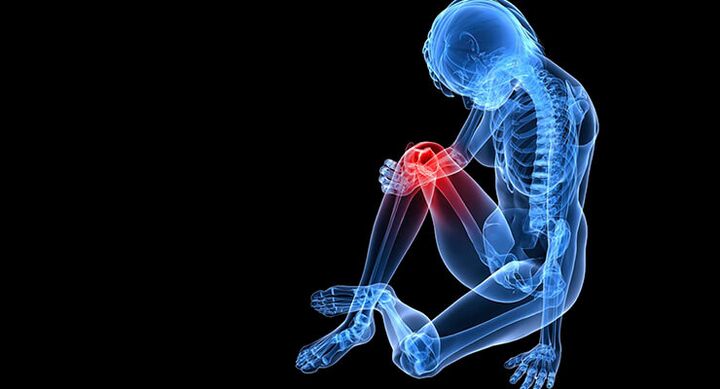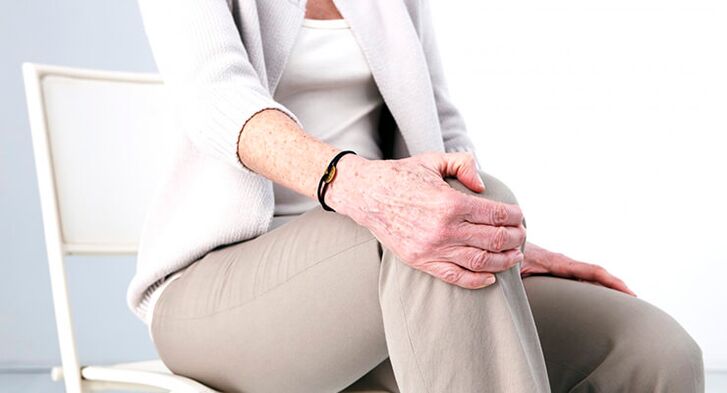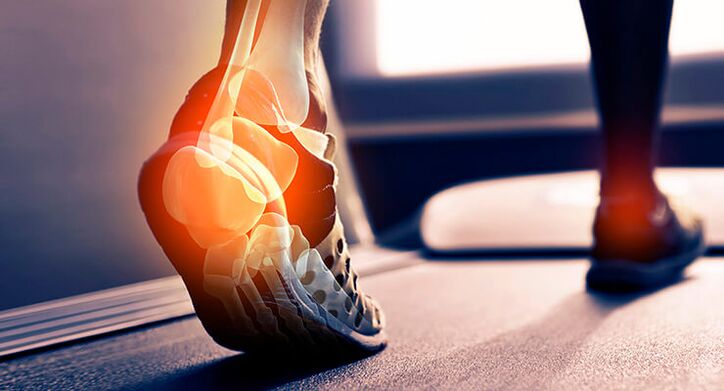Joint problems can occur at a very different age, regardless of the sexual person. This factor significantly reduces the quality of life and limits the degree of mobility of the joints and limbs, delivering multiple inconvenience and pain. Most often, diseases of the musculoskeletal system have a genetically determined and age-related nature. According to statistics, after the onset of 50 years, the risk of arthrosis and arthritis increases 5 times.
Most often, people of the elderly, as well as professional athletes face arthrosis. This disease is a real problem, as it triggers irreversible processes in cartilage and joints, which leads to serious degenerative destruction. In the absence of high -quality and timely treatment, pathology progresses, destroying healthy tissues and making the limb less mobile.
Concept

What is arthrosis for medical definitions? How dangerous is the disease for human health and is it possible to completely recover from this ailment?
Arthrosis is a specific joint disease, which is degenerative-dystrophic. The occurrence of the disease implies a phased, slow destruction of cartilage and joint. Destruction occurs from the inside, provoking irreversible global changes in the articular ends of the bones.
The peculiarity and danger of arthrosis lies in its slow progression. It is quite difficult to detect the problem in the initial stages, since it actually does not manifest itself symptomatically. With arthrosis, inflammation is observed, which, under the influence of a number of pathogenic factors, progresses and enhances. So, in the future, joints and cartilage undergoes the degeneration of perioster fabrics and begin to collapse.
Arthrosis is an extremely common disease that occurs in every fifth person in the world. Such frequent incidence is associated not only with an increase in the average life expectancy of people, but also with a deterioration in the general environmental state, diet, and working conditions. Over the past decades, arthrosis has significantly "younger". So, doctors began to meet more and more often when the disease manifested itself in people whose age did not exceed 30 years.
The reasons for the development of arthrosis
The most common cause of arthrosis is a violation of normal metabolism inside the cartilage. A similar failure leads to the fact that the cartilage of the joint begins to lose its strength and elasticity. It is this moment that he radically affects the mobility of the joint, its performance and endurance. As the "working" properties of fabric are lost, arthrosis begins to inexorably progress.
It is worth noting that the failure in the metabolism does not occur by chance. Mechanical, biological factors can contribute to this. Doctors identify the following most common reasons:
- heredity;
- hormonal imbalance;
- excessive physical activity;
- psoriasis;
- serious injuries;
- Rheumatoid arthritis.
Important! Most often, arthrosis occurs due to regular and strong physical exertion, which athletes, mines, mechanics may face. The irregular load exerts excessive pressure on the cartilage, which begin to wash, collapse and lose their softening properties.
Additional reasons causing a disease of the joints should be attributed:
- bad and unbalanced nutrition;
- obesity, overweight;
- thyroid dysfunction;
- hypothermia;
- tuberculosis;
- encephalitis;
- regular colds;
- syphilis;
- gonorrhea;
- age after 50 years;
- intoxication;
- autoimmune diseases;
- purulent arthritis;
- hemophilia;
- Failure to blood supply to the head of the femoral bones.
Important!Various infections, for example, intestinal or urinary nature, are also capable of provoking arthrosis. Treatment of infectious arthrosis is carried out according to an individual scheme and is aimed at suppressing the focus of infection.
The causes of arthrosis can also be in genetic failures, namely:
- The disease called Bushar knots can be inherited people. People who fall at risk are shown a regular examination by a doctor and preventive therapy.
- Incorrect formation of joints and cartilage in the intrauterine period of development. So, there is a rapid destruction of the joints, which leads to dysplasia.
- Collagen mutations. There is a rapid destruction of connective tissue, cartilage.
Important! The joint is observed due to the partial or abundant loss of proteoglycans. A similar phenomenon occurs in the presence of quite significant cracks in the cartilage or due to insufficient production of lubricants.
Symptoms

Arthrosis and its symptoms directly depend on the type of ailment, as well as the degree of its neglect. As you know, in the initial stages, the disease does not actually declare himself in any way. Low intensity with a low loss of proteoglycans is associated.
The first and main symptom that indicates the presence of arthrosis is unpleasant, aching and obsessive joint pain. Pomes discomfort in a sore joint subside and sometimes intensifies with a sharp change in the weather. As worsening, the pain becomes more stable and strong, sometimes depriving a sick person even appetite and sleep. The sore joint over time begins to change, deform, swell. Also, the state of a person is complicated by such a symptoms:
- Reducing activity and mobility - arthrosis in the joints manifest themselves in the form of constraint, which significantly limits a person in normal and full -fledged movement. A person has a feeling that a sore limb has increased several times in weight and lost its sensitivity.
- Cryst - in the presence of arthrosis, is distinguished by its clarity and "dryness". Often this symptom causes discomfort. A similar condition occurs due to a decrease in the softness of the rotation of the bones.
- Redness - in some cases, inflammation of the diseased joint manifests itself as a change in the color of the upper skin of the skin. As a rule, this indicates the neglect of the state, as well as a significant deformation of the joint.
Important! The intensity of joint pain is almost always enhanced at night, as well as after physical work. Unpleasant pain disappears after taking painkillers, as well as after a short rest.
Stages
Answering a question about arthrosis - what it is, it must be understood that this disease is not completely cured. The ailment can be restrained and maintained throughout life, providing a normal and worthy quality of life.
The success of the treatment of arthrosis directly depends on its stage. The sooner the patient to contact the doctor with his problem, the more chances he has to achieve a stable and prolonged recovery. Arthrosis is divided into such stages:
- The initial stage is characterized by the smallest manifestation of symptoms. It does not interfere with the normal operation of the joints, although it makes it much difficult. This stage of the disease is characterized by the presence of stiffness in movements in the morning, slight pain, rare crunch.
- The second stage - the disease significantly prevents the performance of daily work. In this form, the disease acquires a more acute character. During movements, a distinct crunch in the joint is heard, the pain is pronounced. A violation of the normal biomechanics of the joint is noted, but the relative mobility is preserved.
- The third stage - is characterized by a loss of performance and mobility of the joints. In this case, there is a serious deformation and destruction of the joint. The patient is worried about severe pain, the amplitude of movements is seriously limited. The muscle tissue is largely worsened.
- The fourth stage is the final and most serious stage of the disease, which is characterized by complete destruction of the joint and a violation of its functionality. This form of arthrosis is distinguished by global pain syndrome, the complete lack of mobility of the sore limb.
Important! In the initial stages, patients are shown conservative treatment, which is based on drug therapy, diet and special gymnastics. With advanced stages of arthrosis, surgical intervention is indicated, which involves implantation of an artificial prosthesis.
Diagnostic studies
Detailed diagnostics and laboratory tests allow you to determine the presence of an accurate diagnosis, establish its shape and type. With arthrosis, the following types of research are shown:
- The history of the anamnesis - the doctor is interested in the health of the patient, establishes the nature and intensity of the symptoms, determines the time of the appearance of the first signs of the disease;
- radiography - helps to determine the condition of the joints, reveals the narrowing of the joint gap, the occurrence of osteophytes, seals, deformation;
- Blood test - detects the speed and degree of deduction of red blood cells.
Important! Additionally, the doctor may appoint CT and MRI. In some cases, the analysis of synovial fluid and histological analysis are indicated.
Treatment of arthrosis

How to treat arthrosis can only be solved by a doctor. Therapy in the initial stages should assume pathogenetic, complex treatment methods. It should help eliminate inflammation, suppress the degenerative process and restore the working functions of the joint.
Effective and effective treatment includes the following principles:
- lack of excessive loads;
- following the orthopedic regime;
- medical physical education and passage of special massage courses;
- Visiting sanatoriums;
- physiotherapy;
- oxygenotherapy - saturation of sore joints with oxygen;
- The appointment of internal blockade.
Important! Self -medication is unacceptable in case of suspicion of arthrosis. The uncontrolled medication, as well as the improper use of folk remedies of medicine, can only worsen the inflammatory process and accelerate the destruction of cartilage tissue.
How to treat arthrosis? The treatment of this ailment is based on such medications:
- Anti -inflammatory - slow down the course of the disease, relieve pain, which helps to significantly improve the well -being and quality of life of a sick person. For optimal treatment, non -steroidal anti -inflammatory drugs are used.
- Hormonal - are used in the acute stage of arthrosis. They help to suppress the pain syndrome and improve overall well -being.
- Protectors - restore cartilage, contribute to the improvement of the composition of the synovial fluid.
Important! In particularly difficult cases of illness, doctors prescribe a drug analgesics to the patient. Such drugs are used only if standard therapy has not brought the desired results.
Nutrition
In addition to high -quality treatment, no less important place is occupied by proper nutrition with such a specific ailment as arthrosis. In case of disease, it is extremely necessary to eat fully and useful.
If the patient has excess weight, then everything must be done to reduce it. This will help relieve unnecessary load on the joints and ensure their faster recovery. Even in the absence of extra kilograms - it is necessary to eat correctly. From the daily diet you need to exclude:
- fast carbohydrates;
- alcohol;
- seasonings;
- sweets;
- Fat and spicy dishes.
The emphasis must be placed on such food;
- fish;
- low -fat varieties of meat;
- sour -milk products;
- vegetables;
- fruits;
- grain;
- seafood.
With arthrosis, doctors advise you to eat jelly. Of course, this must be done in reasonable quantities. This passes are a storehouse of important trace elements and vitamins. Also, jelly contributes to the restoration of cartilage. However, it is recommended to prepare this product in an independent way. So you will probably be sure of its absolute naturalness and usefulness.
Possible complications

Ignoring symptoms leads to irreversible consequences. The lack of treatment always causes complete destruction of the joint, and also provokes changes in the spine in biomechanics. The main complications of arthrosis include:
- complete destruction of the joint;
- joint deformation;
- lack of human mobility;
- The occurrence of hernias,
- development of degeneration in healthy joints;
- significant decrease in the quality of life;
- Obtaining disability.
In order to prevent the appearance of deteriorations and significant deformation of cartilage and joints, it is necessary to provide the patient with receiving high -quality and highly qualified medical care. This will stop degenerative processes and ensure the preservation of bone and joint integrity.
Forecast
The prognosis for joint disease directly depends on several factors, namely:
- type of ailment;
- form;
- The level of quality of therapy.
With a timely detected disease, the patient can count on a successful outcome, which will preserve the joint in a mobile state. However, it should be remembered that even with a neglected state of arthrosis, the patient can count on a positive result due to prosthetics.
Preventive measures
The prevention of arthrosis, like many other diseases of the musculoskeletal system, involves adjusting your own lifestyle. This is worth it:
- prevention of excess weight;
- exclusion of serious physical exertion;
- power adjustment;
- lack of stressful factors;
- Timely treatment of acute stage of the disease.
The treatment of arthrosis and its prevention are the aggregate concepts that should be joint if a person wants to keep control of his ailment, live a rich and full life.





















